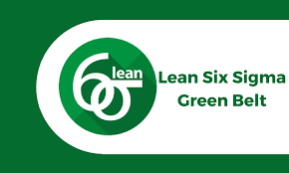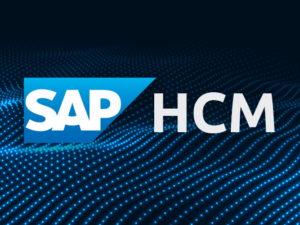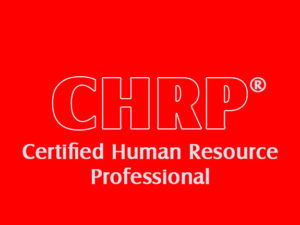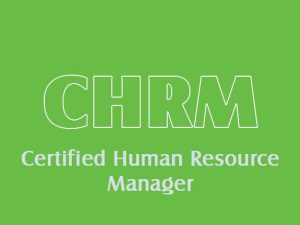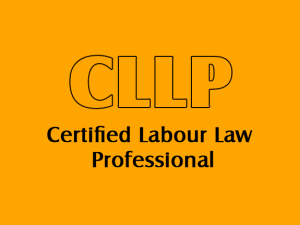This Lean Six Sigma Green Belt Training and Certification Course provides you a practical perspective of learning Six Sigma tools. This is one of the Best Six Sigma Certification programs available online that not only helps you understand Six Sigma principles, Six Sigma tools, Six Sigma examples but also helps you do a realistic Lean Six Sigma Green Belt case study in a step-by-step manner. The structure of this Six Sigma Certification program allows you to understand how to easily apply your knowledge and skills in your work environment. This in-turn helps you get the desired visibility in your organization resulting in career growth and a positive impact on your salary. This Lean Six Sigma Green Belt program provides you the proficiency in 100+ Lean and Six Sigma tools and techniques. This course is a package of Six Sigma, Lean as well as Minitab expertise. This Six Sigma Certification course not only adds the Lean Six Sigma Green Belt qualification to your skill set but also provides you an opportunity to enhance your resume helping you stand out in this competitive world.
By choosing this Lean Six Sigma Green Belt training and certification program, you are enrolling the most in-depth, beginner to advanced level Lean Six Sigma Green Belt Certification with expertise on Minitab.
Learning Six Sigma Green Belt can help impact your career positively. The ability to add Six Sigma Green Belt Certification to your resume proves your commitment to improving your business intelligence and analytical skills, as well as improving the business process where you work. Accepted globally, the principles of Six Sigma find applications in countless manufacturing as well as service oriented organizations across a wide range of industries worldwide.
List of Lean Six Sigma (Lean Six Sigma Certification) Tools Covered
1: Introduction to Six Sigma I
- Six Sigma & its Goals
- Six Sigma as a Performance Measure, Problem Solving Tool, & Management Philosophy
- Problem Solving Tools Used in Six Sigma & its Evolution
- Variation and Significance
- Critical-To-Quality Measures & Specification Limits
- Definition & Understanding of Defects & Defect Opportunities
- Source of Defects – Variation & Off-Centered
2: Introduction to Six Sigma II
- Sigma Scores and Percentages
- Defectives per Million & Defects per Million Opportunities
- Relationship between Sigma Scores and DPMO and Percentages
- Lean, Goals of Lean & Lean Six Sigma
- Six Sigma Problem Solving Methodologies
- Six Sigma Tool Kit & Business Process Management Model
3: Six Sigma Problem Solving
- Business Problem and Six Sigma Project & its Sources
- Generic Model & Approach to Business Problem Solving
- Logic and Intuition, Just do It, DMAIC, & DFSS – IDOV
- Selecting the Right Problem Solving Method
- Need & Criteria for Project Selection
- Project Selection tools – Pareto Diagram, & Project Selection Matrix
- DMAIC Project Roadmap & Characteristics of Problem Solving
- Project Tools, Tollgate Review & Project Durations
- DFSS Project Roadmap
4: Six Sigma Roles & Responsibilities
- Roles & Responsibilities
- Yellow, Green, Black, & Master Black Belt
- Champion / Process Owner & Deployment Champion
- Certification Criteria to be a Yellow Belt, Green Belt, Black Belt & Master Black Belt
- Career Chances: Six Sigma Professionals
- Types of Certification & ASQ/IASSC Certification Criteria
5: Listening to Customer
- Customer – Internal & External
- Voice of Customer (VOC) & Need for Voice of Customer
- Verbatim & Verbatim to Requirements
- Gather VOCs – Direct & Indirect Method
- Methods of Gathering VOC & Analyze VOC
- Definition & Procedure for Affinity Diagram
- Customer Priorities & Kano Model
- Customer Requirements – Must-Be’s, Delighters, One Dimensional
- Quality Function Deployment
6: Define – Completing a Project Charter
- Definition & Elements of Project Charter
- Business Case & Problem Statement
- Measure of Success of a Project
- Primary and Secondary Metrics
- Goal Statement
- Team Members & Roles
- Project Benefits, Translation Plan, & Project Duration Guidelines
- Project Kick-off & Weekly Meetings
- Need for Project Scoping, Project Scoping & Tools
- Procedure to use In Frame / Out Frame
7: Define – Process Mapping Tools
- Process Mapping Tools, its Purpose, & Types
- Definition & Purpose of SIPOC, Cross-Functional Process Maps, Process Flowchart, Standard Operating Procedure
- Procedure of SIPOC & Cross-Functional Process Map
- Process States – As-is, Should-be & To-be
- Value to customer & Definition & Purpose of Process Value Analysis
- Value Added, Non Value Added & Value Enabling Activities
- Important Terms & Procedure of Process Value Analysis
8: Measure – Cause & Effect Relationships
- Definition of Cause & Effect
- Types of Causes – Possible, Potential, & Root Causes
- Cause & Effect Diagram
- Structure, Purpose, Benefits & Procedure of Cause & Effect Diagram
- Definition & Procedure for Performing 5 Why
- Definition & Procedure to Construct a Cause & Effect Matrix
- Definition of Root Cause Analysis
- Definition & Procedure for Practical RCA
- Definition of Graphical RCA
- Definition of Analytical RCA
9: Measurement System Analysis
- Accuracy, Resolution, Bias
- Stability, Linearity
- Precision, Repeatibility and Reproducibility
- Discrete GRR
10: Measure – Data Types
- Data Collection Roadmap
- Types of Data – Attribute, Variable & Locational Data
- Comparison & Conversion between Variable & Attribute Data
- Types of Measurement Scales – Nominal, Ordinal, Interval, & Ratio Scale
11: Measure – Data Sampling
- Definition, Need & Applications of Data Sampling
- Sampling Strategy & Approach for Sampling Plan
- Population & Process Sampling
- Sample Size Computation & Need
- Computing Discrete & Continuous Data Sample Size
12: Measure – Data Collection
- Data Collection Roadmap
- Data Collection Plan, Template
- Data Collection Methods
13: Measure – Intro to Business Statistics
- Definition of Probability Distribution, Types, & Importance
- Measures of Central Tendency – Mean, Median, Mode
- Relationship between Mean Median & Mode & Types of Distributions
- Measures of Dispersion – Range, Span, Variance, Standard Deviation
- Types of Descriptive Statistics – Graphical, Numerical
- Definition, Application & Properties of a Normal Distribution & Outlier
- Confidence Limits, Confidence Level & Confidence Intervals
- Definition of Central Limit Theorem & its Application
14: Measure – Graphical Methods
- Definition, Interpretation, & Procedure of Histogram
- When to use a Graphical Summary
- Definition, Interpretation, & Procedure of Box Plot
- Skewness & Kurtosis
- Normality Test & its Procedure
- Definition of Stem-and-Leaf Plot, Run Charts, Scatter Plots
- Run Chart Patterns & Interpretation with Run table
- Interpretation of Scatter Plots – Direction, Shape, & Strength of Relationship
15: Measure – Assessing Capability & Performance
- Measures of Current Performance
- Process Capability, Process Capability Study & Indices
- Traditional Measures – Cp & Cpk & their Acceptable Limits
- Sigma Capability, Computation of Sigma Scores & Z Tables
- Traditional Measures & Sigma Capability
- Impact of time of Process Capability
- Long Term Vs Short Term & Long Term Indices
- Relationship between Long & Short Term & Cpm
16: Analyze – Theory of Hypothesis Testing
- Hypothesis – Introduction
- Need for Statistical Significance & Statistical Inference
- Hypothesis Testing, Applications & Basics
- Hypothesis Statements – Null & Alternative Hypothesis
- Significance Levels, & Alpha Values
- Tests of Significance – Statistical & Practical Significance
- Test Statistic & P Value & Its Interpretation
- Errors in Hypothesis Testing & Types of Errors
17: Analyze – Performing Hypothesis Test
- Hypothesis Tests for Means, Variance, Proportions
- Selection of Hypothesis Tests & Criteria for Selection
- Z-Test, Z-statistic, & Assumptions
- t-Test, t-Statistic, 1-t Test & 2-t Test, & Assumptions
- Paired Data – Paired t-Test, Preparation & Procedure
- ANOVA & F-test, Assumptions, Preparation & Procedure
- Chi-square Test & Statistic, Assumptions, Preparation & Procedure
- Proportions Test – 1-p Test & 2-p Test, Assumptions, Preparation & Procedure
18: Analyze – Correlation & Regression
- Correlation, Regression, Scatter Plots, & Correlation Coefficient
- Procedure of Simple Linear Correlation & Interpretation of Scatter Plots
- Application of Regression & its Types
- Regression Line of Fit, Regression Equation, & its Statistical Significance
- R-SQ Value & Procedure of Simple Regression
- Prioritization of Causes, & Pareto Principle
- Definition & Procedure for Pareto Chart
- Definition & Procedure of Control-Impact Matrix
19: Improve – Lean Management Systems
- Definition, Origin, Principles & Goals of Lean
- Value, Value Stream, Concept of Muda (Waste) & Categories of Waste
- 7 Types of Wastes, How to Identify them, & Waste Identification Template
- Value Stream Mapping (VSM), Symbols, Benefits & Procedure
- Push System, Pull System, Single Piece Flow, 5S, Kaizen, SMED, Poka-Yoke
- Types of Poka-Yoke – Shut Down, Prevention, Warning, Instructions
- Heijunka & Visual Control
20: Improve – Generating & Screening Solutions
- Approach to Solution Generation, Definition, & Types of Lateral Thinking
- Edward De Bono, Definition & Concept of Random Stimulus
- Brainstorming – Unstructured, & Structured Brainstorming
- Brainstorming Principles & Types
- Solution Screening Techniques, Need, Approach, & Filtering Techniques
- Definition of N/3 Voting & Procedure
- Definition of Pay Off Matrix & Procedure
- Definition of Criteria Based Matrix (CBM) & Procedure
- Definition of Pugh Matrix & Procedure
21: Improve – Failure Mode Effects Analysis
- Definition & Elements of Process Risk
- Managing Six Sigma Process Risks
- Tools Used in Risk Management, Definition & Approach to FMEA
- Definition of Failure Modes, Effects, Cause, Current Controls
- Prioritizing Risks, Definition of Risk Priority Number & Calculation
- Definition of Severity & Severity Rating Scale
- Definition of Occurrence & Occurrence Rating Scale
- Definition of Detection & Detection Rating Scale
- Risk Mitigation Strategies & Application of FMEA
- Definition of DFMEA
22: Control – Control Plan
- Process Control, Role of Process Control in 6 sigma projects & in Control Phase
- Process Control Plan, Control Parameters, Method of Control
- Reaction Plan & Procedure
- Statistical Process Control (SPC), History, & its Application
- Definition, Purpose, Selection & Interpretation of Control Charts
- Control Limits, Normal Distribution, Specification Limits
- Stability Tests & Guidelines for Stability Tests
- Solutions Implementation & Statistical Validation of Improvements
- Post-Improvement Capability Analysis, Project Documentation & Benefits
- Project Closure & Translation Plan

